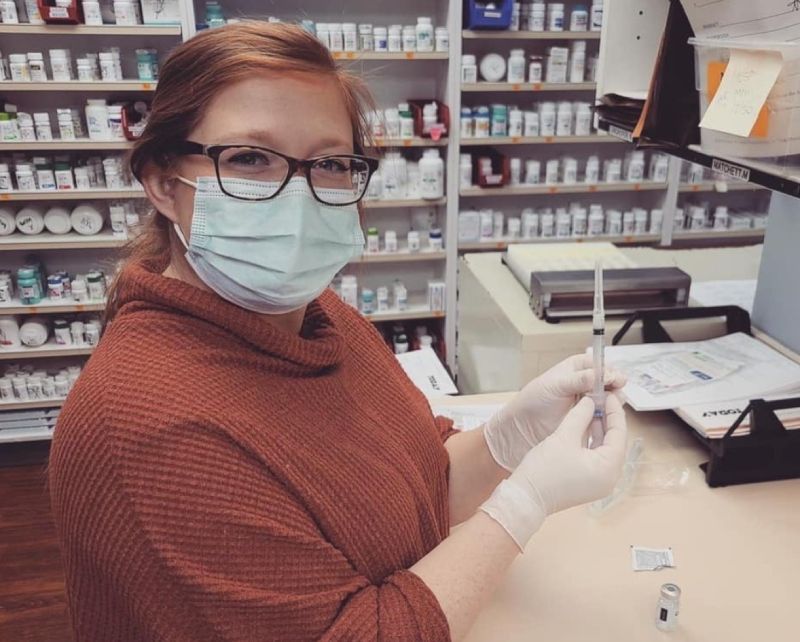RMA vs. CMA: Understanding the Key Differences in Medical Assistant Certifications
If you’re considering a career as a medical assistant, one of the first decisions you’ll face is which certification to pursue. Two of the most recognized credentials in the field are the Registered Medical Assistant (RMA) and the Certified Medical Assistant (CMA).
Understanding the differences between these two certifications can help you make an informed choice that aligns with your education, experience, and career goals. In this guide, we’ll take a close look at what sets the RMA and CMA apart — covering everything from eligibility requirements to renewal timelines — so you can make an informed decision about the path that’s right for you.
What Is a Registered Medical Assistant?
RMAs are certified healthcare professionals who support physicians and other medical practitioners by performing a variety of administrative and clinical duties in healthcare facilities. As a certified role, anyone hoping to become an RMA must first meet certain eligibility requirements and pass the American Medical Technologists (AMT) examination before starting work.
To be eligible, candidates must meet at least one of the following criteria:
- Be a graduate of an accredited medical assisting program within the last 4 years
- Have completed a hybrid education/work experience medical assisting program within the last 4 years
- Have completed a formal medical services training program through the U.S. Armed Forces within the last 4 years
- Be employed as a medical assistant for at least 3 years within the last 7-year period
- Be a current instructor of an accredited medical assisting program with at least 5 years of teaching experience teaching medical assisting courses
Once certified, RMAs must maintain their certification over the course of a 3-year certification cycle. This involves submitting proof of continuing education over the 3-year period and paying an annual renewal fee.
What Is a Certified Medical Assistant?
Like RMAs, a CMA is a credentialed healthcare professional who performs clinical and administrative tasks in physicians’ offices, clinics, outpatient centers, and other healthcare environments. Prospective CMAs must graduate from a medical assisting program accredited by either the Commission on Accreditation of Allied Health Education Programs (CAAHEP) or the Accrediting Bureau of Health Education Schools (ABHES) and pass the CMA exam, administered by the American Association of Medical Assistants (AAMA) to be eligible for the role. Candidates may also be eligible if they have previously been AAMA certified or qualify for the alternative pathway.
CMA certification is valid for 5 years. To maintain certification, CMAs must either pass a recertification exam or satisfy continuing education requirements by completing approved activities throughout the certification period.
Registered vs. Certified Medical Assistant: What’s the Difference?
While RMAs and CMAs hold different credentials, their roles within the healthcare field are quite similar. Both types of medical assistants perform a mix of clinical and administrative tasks that help keep healthcare practices running smoothly. However, there are a few key differences worth noting — especially when it comes to certification requirements, renewal timelines, and the credentialing bodies.
Job Functions: More Similarities Than Differences
As part of their day-to-day responsibilities, RMAs and CMAs typically perform the same type of duties. These include:
- Taking patient histories and vital signs
- Assisting physicians with examinations and minor procedures
- Administering medications
- Performing basic lab tests
- Managing patient records
- Scheduling appointments
- Handling billing and insurance paperwork
When hiring, employers may use the terms “registered medical assistant” and “certified medical assistant” interchangeably, and job descriptions rarely distinguish between the two credentials. That said, some employers may have a preference for one certification over the other, depending on internal standards or practice preferences.
Keeping Certification Active
Though both certifications require ongoing maintenance, their renewal timelines differ:
- RMAs must renew according to a 3-year cycle, completing continuing education requirements and paying an annual renewal fee during this period.
- CMAs must renew their credentials every 5 years, either by passing an exam or by earning a certain number of continuing education points in specific categories.
A Brief History
The medical assisting profession began to formalize in the mid-20th century as the demand for support staff in doctors’ offices grew. The AAMA was founded in 1956 and began offering the CMA credential 7 years later. The AMT has been certifying RMAs since 1972, establishing an alternative pathway for those entering the profession through different educational or experiential routes.
Credential Comparison Chart
To help clarify the differences between these two credentials, the following reference chart outlines how they compare.
| Registered Medical Assistant | Certified Medical Assistant | |
|---|---|---|
| Certifying Organization | American Medical Technologists (AMT) | American Association of Medical Assistants (AAMA) |
| Eligibility | Several paths: Through accredited training programs, hybrid education/work experience training programs, training programs offered through the military, 3 years of professional medical assistant experience, or 5+ years medical assistant teaching experience | Must graduate from an accredited training program, have previous AAMA certification, or follow the alternative pathway |
| Exam Format | 210 multiple choice questions | 200 multiple choice questions |
| Exam Content | Anatomy and Physiology, Administrative Medical Assisting, Clinical Procedural Tasks, Clinical Patient Interaction | Clinical Competency, General, Administrative |
| Renewal Timeline | Every 3 years | Every 5 years |
| Renewal Requirements | Continuing education and renewal fee | Recertification exam or 60 continuing education points, recertification fee |
| Common Work Settings | Physicians’ offices, clinics, outpatient care centers | Physicians’ offices, clinics, outpatient care centers |
| Daily Responsibilities | Clinical tasks (taking vitals, assisting with minor procedures, administering medications, etc.), administrative work (e.g. scheduling, billing) | Similar clinical and administrative tasks |
| History | AMT began offering RMA certification in 1972 | AAMA launched its CMA certification in 1963 |
RMA vs. CMA Salary
One of the most common questions aspiring medical assistants ask is whether earning an RMA or CMA certification will lead to a higher salary. The truth is, there’s no significant difference in pay between the two credentials. Both RMAs and CMAs are qualified for the same roles, and most employers don’t distinguish between the two when determining compensation.
According to the U.S. Bureau of Labor Statistics, the median annual salary for medical assistants is $44,200. However, this figure can vary depending on where the role is located geographically and the employer. For example, medical assistants who work in major cities at larger practices tend to earn more than those who are employed by smaller offices located in rural communities.
How to Choose Which Credential Is Right for You
Deciding between the two certifications ultimately comes down to your background, career goals, and practical considerations. While both certifications can lead to similar career outcomes, there are a few key differences that might make one a better fit for your circumstances.
- State requirements: Before committing to a certification path, check your state’s medical assisting guidelines to verify that your chosen credential meets any and all regulations.
- Employer preferences: If you hope to work for a specific employer or healthcare system, it’s worth looking into whether they prefer or require a certain credential.
- Eligibility requirements: The RMA credential offers more pathways to certification, which can be especially helpful if you didn’t attend a traditional medical assisting program, but qualify in other ways.
- Renewal timelines: The CMA certification stays valid for 5 years, while the RMA must be renewed every 3 years. If you’d prefer more time to accumulate continuing education hours, the CMA offers the flexibility you’re looking for.
FAQ
What is the difference between RMA and CMA?
The difference between these two credentials boils down to eligibility requirements and renewal timelines. The RMA offers a wider path to certification, accommodating a broader range of backgrounds than the CMA. On the other hand, the CMA has a longer renewal period. Credentialled individuals must renew their certification every 5 years, compared to every 3 years for the RMA.
How much will I earn as an RMA or CMA?
Since both credentials qualify individuals for the same roles, RMAs and CMAs generally earn similar salaries. Instead, pay is influenced by factors such as location and workplace setting. According to the U.S. Bureau of Labor Statistics, the median annual salary for medical assistants is $44,200.
Who is eligible to become a RMA?
RMA certification through AMT is open to: recent graduates of accredited medical assisting programs, anyone who recently completed a hybrid education/work experience medical assisting program, those who recently completed a medical services training program through the U.S. military, professionals who have worked as medical assistants for 3 years within the last 7-year period, and current medical assisting program instructors with a minimum of 5 years experience.
Who is eligible to become a CMA?
To be eligible for the CMA credential through AAMA, candidates must graduate from a medical assisting program accredited by either the CAAHEP or the ABHES, have previously been an AAMA-certified CMA, or qualify for the alternative pathway.
Start Your Medical Assisting Career
Both RMA and CMA certifications offer strong foundations for a career in medical assisting, with both qualifying you for roles that make a difference in patients’ lives. But if you’re especially interested in the clinical side of patient care, working as a certified clinical medical assistant (CCMA) may be the better match.
At Advanced eClinical Training, we offer a CCMA training program designed for people like you, who want to focus on hands-on, patient-facing work. With a flexible online learning format, expert instructors, and a curriculum built to set you up for success in your future role, it’s an excellent starting point for your medical career.
Ready to get started? Enroll today.


